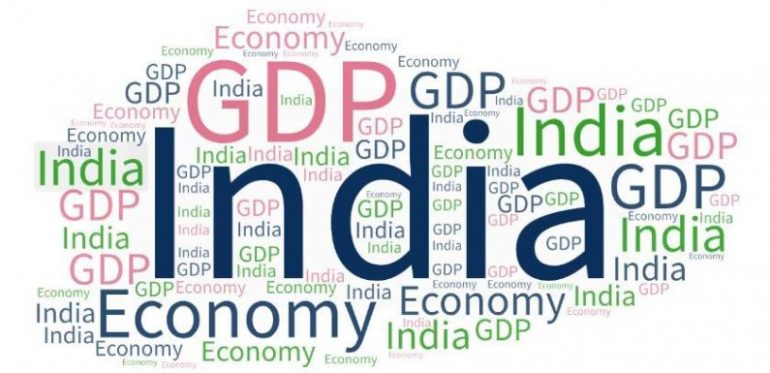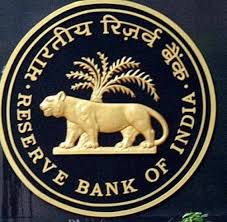India is faced with many downside risks. It begins with continued global trade tensions delaying recovery. The recent corona virus scare has also hit global economy. Exports are unlike to pick up much. Despite some thaw in the US-Iran tensions, survey economists fear swelling of fiscal deficit – beyond the budgetary projection of 3.5 per cent. It also hints out at increase in capital cost weakening inducement to invest.
 Shivaji Sarkar
Shivaji Sarkar

India, now the fifth largest economy and aiming to become the third, is growing at 5 per cent in 2019-20, says the Economic Survey. The RBI has estimated it at 4.8 per cent and the IMF and other international organisations agree with it. This is lower than the 2018-19 figures of 6.8 per cent but the survey is hopeful of a better pace.

The nominal GDP is estimated at Rs 204.4 lakh crore ($2.9 trillion) in 2019-20 with a growth of 7.5 per cent over the provisional estimates of at Rs 190.1 lakh crore ($ 2.7 trillion) in 2018-19. However, it finds gross value addition deceleration at basic prices reduced to 4.9 per cent against 6.6 per cent in 2018-19 across all sectors, public administration and defence.
The most positive aspect is the rise in NIFTY India Consumption Index for the first time this year with a growth of 10.1 per cent in October 2019. It decelerates in November 2019 to 5.7 per cent and in December to 0.19 per cent. Though this indicates hardship, the survey does not lose its hope
Two other aspects of its optimism are upbeat BSE sensex that rises by 7 per cent till Dec 31 and confidence of foreign investors in India. The FDI has increased to $4.4 billion till November against $21.2 billion in April-November 2018. The foreign portfolio investment had risen to $12.6 billion though outflow also rose to $8.7 billion.
Forex reserves rising to $461.2 billion till January 10, 2020 from $413 billion in March 2019 is reflective of the confidence of overseas investors. Possibly it indicates that make in India is an investment puller. It also finds it better that “assemble in India” that was the norm four decades earlier. It sees a positive in food inflation since April 2019 and possibly even 7.35 consumer index rise in December. It says, “The terms of trade for farmers is improving and will lead to increase in rural demand”.
The other positives in its view are gross GST collection surpassing Rs 1 lakh crore, “pointing to an increased economic activity”. Though it admits that the recent growth deceleration is a drag, it says the virtuous cycle of higher fixed investment-higher GDP growth-higher consumption growth generated economic development.
It rightly points out that “post-incentivisation” of the corporate from 2008-09 to 2011-12, during the UPA regime, fixed investment rate started declining sharply since 2011-12. It plateaued in 2016-17 but deceleration continues. This is linked to excessive bank lending driven by irrational exuberance of “boom period” to decline in corporate investments. Between 2011 and 2015, it finds the dependent variable regressing and found credit expansion between 2008-12 negatively affecting investment between 2013 and 2017. It has linked the slowdown to this credit growth/boom of the banks. Credit growth significantly fell in 2014-19 compared to 2009-14.

Consequently, household investments declined in dwelling, other buildings and structures since 2011-12. It continues and the survey says that it is a reflection of slower growth in purchase of houses. It led to real estate crisis and build-up of unsold inventory over the years.
Another problem has been that “housing prices remained elevated even though growth in prices (secondary market) has fallen since 2015-16 and remains muted since then”.
The survey says that the crisis is of a grave nature. As at end of December 2018, about 9.43 lakh units worth Rs 7.77 lakh crore inventory are stuck in various stages of the project cycle across top eight cities.
The total unsold stock is valued at around Rs 1 to 1.5 lakh crore but with 200 per cent rise in index value it is supposed to be worth at Rs 7.77 lakh crore. Does the survey indicate another bust around the corner?
Private consumption, the survey says, also started declining in 2017 and continues till 2019. It also sees a drop in savings in physical assets. Income not saved in physical assets by households is either saved in gold or silver – a result of falling interest rates in deposits or is consumed. Savings declined at national level and the budget still disincentivises it. The survey says, “A non-rising gross domestic savings rate may further deteriorate the rupee and make the virtuous cycle more difficult to realise”.
The survey points out to a murky point of overall the households spending more on consumption since 2011-12. It may be explained through factors of prices rising and falling of income as well – either way the households are in distress and do not have disposable income to boost the market, an essential for growth. This has led the IMF and World Bank in January 2020 to project India’s real GDP to grow at 5.8 per cent in 2020-21.
India is faced with many downside risks. It begins with continued global trade tensions delaying recovery. The recent corona virus scare has also hit global economy. Exports are unlike to pick up much. Despite some thaw in the US-Iran tensions, survey economists fear swelling of fiscal deficit – beyond the budgetary projection of 3.5 per cent. It also hints out at increase in capital cost weakening inducement to invest.
While it does not discourage increase in interest rates on deposits it finds that quantitative easing may fuel inflation. If short-term interest rates are raised it fears a capital flight and rupee coming under pressure. Private consumption can hit investments further.
Another risk it sees in the conventional monetary policy. It has run a full course. This means a new monetary policy has to evolve. But there is a flipside too. Investment in the public sector post budgetary announcement and as per National Infrastructure Pipeline proposal of Rs 102 lakh crore has to increase. This may increase fiscal deficit – simply means government borrowings would rise.
This is likely to “crowd out private investment” because the financial institutions having funded the government efforts would not have much surplus. So they are likely to seek external funding. The survey says that if this happens, the current account deficit would increase and it can depreciate the rupee.

The government’s thrust on housing and clearance of inventory, FDI, Make in India, positive impact of RBI policies and improvement in ease of doing business are to increase the optimistic outlook. If this prevails, the survey expects strong rebound in 2020-21. It would belie the IMF, World Bank forecasts and higher real GDP growth.


